Top News
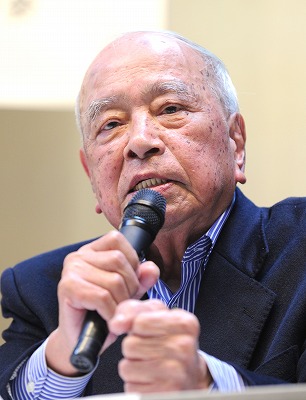
June 12, 2017 Ryukyu Shimpo
Former Okinawa Governor Masahide Ota died at age 92 due to respiratory failure and pneumonia at a hospital in Naha City at 11:50 a.m. on June 12.
He experienced the raging battle of Okinawa as a member of “Tekketsu Kinnotai” or “Blood and Iron Student Corps”. He served as Okinawa Governor and as a member of the Upper House, and was dedicated to solving the military base issue and developing the prefectural economy.
Ota was borne in 1925 in Kumejima Island. In 1945, he was drafted into the 32nd Japanese Imperial Army as a member of Tekketsu Kinnotai when he was a second-year student at Okinawa Shihan Gakko, a normal school or teachers’ college, and barely escaped death.
After graduating from Waseda University, he studied in the United States, and later became a member of the Golden Gate Club, which consisted of Okinawans who had participated in study-abroad programs in the U.S.
In 1968, he worked as a professor at the University of the Ryukyus, majoring in Media Sociology and conducted research into news media reports.
In 1990, Ota ran in the prefectural gubernatorial election as the unified candidate of the reformists and moderates, and defeated Junji Nishime, incumbent conservative candidate. He recaptured the prefectural administration for the reformists for the first time in 12 years.
Governors of the past have been asked what is “Okinawa no kokoro”, the heart of Okinawa. Ota expressed the view that it was the “symbiosis of loving peace”.
In 1995 during his term of office, he built the Cornerstone of Peace and the Okinawa Prefectural Archives, and started relocating and renovating the Peace Memorial Museum.
In 1996, he drew up the “international city formation initiative”, a future vision of Okinawa with no military bases, aiming to ensure self-sustaining development.
In addition, he created an action program to return all lands used by U.S. forces in stages, and proposed it to the central government.
The idea of the international city formation initiative is being carried on in the current Okinawa promotion plan “Okinawa 21st Century Vision”.
Regarding the U.S. base issue, Ota visited the United States seven times, more visits than any previous governor, seeking to reduce the U.S. base burden.
In 1995, an okinawan girl was raped by U.S. service members.
The then-governor Ota refused to sign the contracts to renew the land leases for military use on behalf of the landowners who rejected their contracts, and he was sued by the prime minister.
After he was defeated by Keiichi Inamine in the 1998 governor’s election, he ran as a candidate of the Social Democratic Party in the Upper House election in 2001 and was elected.
He retired from politics in 2007.
Ota was also known as a scholar who specialized in researching the Battle of Okinawa and the U.S. High Commissioners, who governed Okinawa. He revealed the reality of the Battle of Okinawa and the subsequent era of the U.S. military rule from the viewpoint of residents.
Ota wrote over seventy books, including “Okinawa – War and Peace”, “Ugly Japanese – How the General Public Sees Okinawa”, “The bottom of Okinawans’ heart
The Battle of Okinawa and me
“, “The Corner stone of Peace”, “This Was The Battle of Okinawa”, “Chronological Coverage of the Battle of Okinawar”and “Public Consensus in Okinawa”.
He received the Higashionna Kanjun Prize for remarkable achievement in Okinawan studies in 1998, and the Ryukyu Shimpo Award in 2009. In 2017, he was nominated as a candidate for the Nobel Peace Prize.
(English translation by T&CT)
Go to Japanese
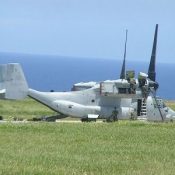
June 7, 2017 Ryukyu Shimpo
On the night of June 6, a Marine Corps MV-22 Osprey vertical takeoff and landing aircraft from Futenma Air Station made an emergency landing on the coral runway at Ie Jima Auxiliary Airfield. According to Ie Village office, no injuries or material damages have been confirmed. As of noon on June 7 the aircraft was still parked at Ie Jima Auxiliary Airfield.
At 8:40 a.m. on June 7, the Okinawa Defense Bureau (ODB) contacted the Ie Village Office, explaining that on the night June 6 the Osprey made an emergency landing on the coral runway because an emergency light in its cockpit illuminated during training exercises. The ODB also mentioned that the fuselage was undergoing maintenance and would return to Futenma as soon as it was confirmed to be safe.
On June 7, several US servicemen removed the Osprey’s engine cover and performed maintenance on the fuselage. At 2:08 p.m., the Osprey returned to Futenma Air Station in Ginowan City from Ie Jima Auxiliary Airfield.
(English translation by T&CT and Erin Jones)
Go to Japanese
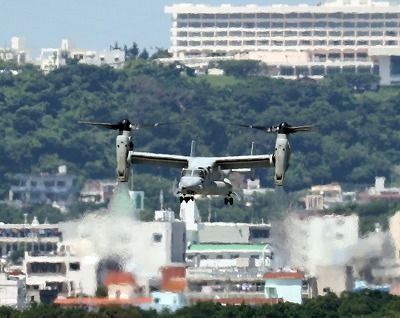
The Osprey returning to Futenma Air Station from Ie-Jima at 2:07 p.m. on June 7
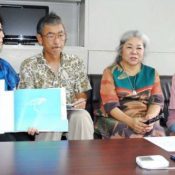
June 7, 2017 Ryukyu Shimpo
On June 6, a petition to the Okinawa Prefectural Government (OPG) was started in hopes of making Dugongs the prefectural animal for Okinawa. The petition is organized by seven people, including singers Tokiko Kato and Misako Kojya. The organizers hope to collect signatures in the tens of thousands within this year and will appeal to the OPG to make Dugongs the prefectural animal for Okinawa. They also plan to request the prefectural assembly to establish protection laws for Dugongs, including designating October 5 as Dugong Day, which is a play on words in Japanese. Representing the group, Kojya said, “Dugongs are a precious treasure, which [our] future generations should be able to see and enjoy. [We] hope to gain many people’s support.”
Besides Kato and Kojya, the organizers of the petition include: marine mammal scientist and Professor Ellen Hines from San Francisco State University, biology Professor Mitsuru Moriguchi from Okinawa University, picture book authors Seizo Tashima and Shoumei You, and underwater photographer Kensuke Yokoi. Going forward, the organizers hope to collect a wide variety of petitions from in and outside of the country using the internet. They hope to create English and Korean versions of their petition.
Kojya held a press conference at the prefectural office on June 6. With the shore protection works underway for the new Henoko base construction in Oura Bay of Nago City in mind, she said, “There are few feeding grounds for Dugongs. There is [only] one ocean, so [we] don’t want [them] to reclaim any more land from the sea.” Professor Moriguchi said, “Dugongs were once familiar animals to Okinawa people. (Through protecting Dugongs) [we] should re-appreciate interacting with nature.”
If you would like to take part in the petition, please call Masako Suzuki at 090-8032-2564.
(English translation by T&CT and Chelsea Ashimine)
Go to Japanese
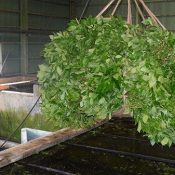
June 7, 2017 Ryukyu Shimpo
By Maki Nagamine
A shortage of Ryukyu indigo, the dye favored for a number of traditional Okinawan dyeing techniques such as bashofu, miyakojofu, and Ryukyu-kasuri has cast a shadow over Okinawa’s artisan community. This is due to factors such as salt damage from typhoons, and the aging of the agricultural community, causing a steep decline in yields for the source perennial crop, called Ryukyuai. The Ryukyuai Factory (Izumi, Motobu), which accounts for over 90% of the dye production in Okinawa, saw a drop in production equal to one-third of the four-ton expected demand in Okinawa for the past two years, and last year they could not avoid adjusting their shipping amount.
The Ryukyuai harvest period occurs twice a year, one in May-June, and the second in October-November. The crop prefers the shade, and is weak to sunlight and high temperatures. The crop is often grown on the slanted surfaces of mountain ravines and requires an abundance of water for raising. The leaf ferments when soaked in water and processed in a state similar to mud or clay before being shipped to textile manufactures.
Leading the shortage are the low-rain typhoons that have struck the northern part of Okinawa’s Main Island in recent years. Salt blown in from the ocean is not washed away by the rain and goes right to the Ryukyuai fields in the ravines, damaging cultivation. The short rainy season two years ago also had a negative effect on the plant’s cultivation.
The Ryukyuai Factory has been digging into the reserves of plants saved up from previous years to make up for the shortage, however they reached the bottom of the reserves in January of last year. Additionally, the farmers contracted to grow the crop continue to retire due to age, and last year’s production fell to 1.4 tons. At the height of demand in the 1970’s the Factory was shipping around seven tons per year.
Toshio Nakanishi, 64, who runs the Factory, reflected, “We had to ship dye with preference to those who had done business with us the longest.” This year, they are looking for farmers to take over for the retired growers and trying to increase farmland, with the goal of achieving a yield of over three tons.
The miyakojofu produced in Miyakojima and Tarama is characterized by its dark indigo color, and uses a lot of Ryukyu indigo. Sachiko Kanzato, head of the Miyako Weaving Co-op, said of the tough situation, “The weavers are feeling the pain of the indigo shortage. We have orders that we are unable to ship, and have asked customers to wait.
(English translation by T&CT and Sam Grieb)
Go to Japanese
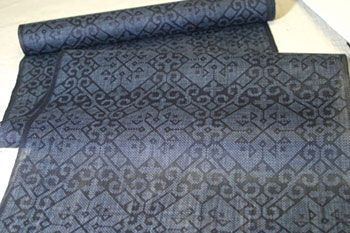
Miyakojofu dyed in dark indigo
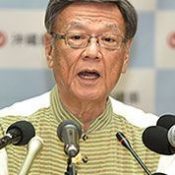
June 8, 2017 Ryukyu Shimpo
On the evening of June 7, Governor Takeshi Onaga held a press conference at the Okinawa Prefectural Office, and stated his intention to bring a lawsuit against the national government. The lawsuit will aim to put a stop to seawall construction work that the Okinawa Defense Bureau is carrying out as part of the construction of a new base in Henoko, Nago despite not having obtained a rock and reef crushing permit for the work. With the lawsuit, Onaga intends to require the government to obtain the rock and reef crushing permit set forth in Article 39 of the prefectural Fisheries Adjustment Regulation. He also intends to request an injunction to stop the construction until a ruling is made in the lawsuit. Onaga said he will propose these actions in the regular June session of the Prefectural Assembly, which will commence on June 20. If the proposal passes by the final meeting on July 14, the lawsuit will be brought before the end of July. With Okinawa’s lawsuit, the fight over the Henoko base construction issue will once again move to the courts.
At the press conference, Governor Onaga stated, “Judging by the construction work they are doing, it is certain that the Defense Bureau will be crushing rocks and reefs in the near future, and therefore as the prefectural government we judged it necessary to take legal measures.” He indicated that he plans to bring the lawsuit even if actual rock and reef crushing has not yet been confirmed.
Regarding revocation of the land reclamation permit, Onaga stated, “Taking into account the current state of the construction and other factors, revocation is very much worthy of consideration. I am proceeding with the belief that revocation will most certainly take place.” However, he did not indicate a specific timing for the revocation.
Governor Onaga criticized the national government’s stance of pushing forward with the construction, stating, “Barging forward recklessly with the land reclamation work, the government is desperate to create a fait accompli.” He further emphasized, “Henoko’s ocean boasts rich biodiversity and is an irreplaceable treasure. Filling in that ocean to build a base that will be there for 200 years on state-owned land that Okinawans can’t touch would be utterly intolerable.”
The rock and reef crushing permit for the area off the coast of Henoko expired at the end of March, but the Defense Bureau continued its work at sea even after the expiration. The prefectural government notified the head of the Defense Bureau on May 29 that it needed to renew the permit to continue work from April onward, but on June 1 the Bureau responded that it did not intend to apply for a renewed permit.
Previously, Governor Onaga cancelled the land reclamation permit needed for the construction of a new base in Henoko, to which the national government responded by bringing a lawsuit that would allow it to execute the permit by proxy. The two parties arrived at a settlement in that suit, but subsequently the national government filed another lawsuit against the governor accusing him of illegal inaction, in which the Supreme Court made a final ruling against Okinawa in December of last year.
(English translation by T&CT and Sandi Aritza)
Go to Japanese
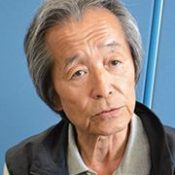
June 4, 2017 Ryukyu Shimpo
Tokyo Metropolitan Television Broadcasting Corporation (Tokyo MX) has faced controversy since the January 2 airing of a segment of its program “News Joshi” (News Girls), due to content such as Okinawa’s anti-base movement proponents being likened to terrorists. Tokyo MX asked 72-year-old journalist Koh Yoshioka to produce a new segment on the topic, which has been in preparation since late May and will include background on the Okinawa anti-base movement.
In response to Ryukyu Shimpo, Tokyo MX stated that it aims to produce a program that conveys the current circumstances in Okinawa by equally featuring those on each side of the Okinawa base issues topic. It was also revealed that the intended airdate is between July and September this year.
On June 2, Tokyo MX asserted that the content of News Joshi is not something that can be refuted altogether, and clarified that the program containing new coverage by Yoshioka is not meant to act as a correction of the original News Joshi segment.
Koh Yoshioka was born in Nagano Prefecture, and lived in Okinawa from 1988 to 1972. During his time in Okinawa Yoshioka worked as a freelance photographer, covering events such as the Koza Riot and witnessing the state of affairs in Okinawa before and after its reversion to Japanese sovereignty. Yoshioka has also covered Okinawa base issues as director of TV Asahi’s “News Station” and TBS’s “Hodo Tokushu.”
Also on June 2, Tokyo MX explained that Yoshioka is a suitable producer of the new segment, as it is essential to convey the disparate views of history between Okinawa and mainland Japan in order to impart why the anti-base movement has developed.
Yoshioka says that people in mainland Japan do not grasp why Okinawa base issues are such a serious topic, and superficially criticize the anti-base movement on the internet and elsewhere without understanding the history of Okinawa.
The upcoming program is planned to set out Okinawan history since its time as the Ryukyu Kingdom, and present interviews with about ten people on each side of the topic from university professors to persons involved in military incidents and accidents.
On June 3, Yoshioka visited the gate to Camp Schwab in Henoko, Nago City, and interviewed local residents who oppose the construction of Futenma’s replacement facility there.
(English translation by T&CT and Erin Jones)
Go to Japanese
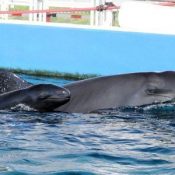
June 2, 2017 Ryukyu Shimpo
A false killer whale, which is a type of dolphin, gave birth to a baby on May 23 at the Ocean Expo Park in Motobu Town. This is the first birth of the species to happen at the park for 17 years. Momo, the mother of the baby, was rescued near Yomitan.
This is a rare case in which a false killer whale has been raised from its birth. There are very few breeding records for this particular species in the world. Out of eight cases of the species breeding in Japan, only one survived more than a year. The dolphin was born at the Ocean Expo Park in 2000.
(English translation by T&CT and Sayaka Sakuma)
Go to Japanese
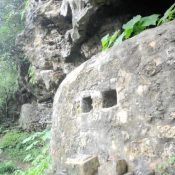
June 1, 2017 Ryukyu Shimpo
By Takahiro Miyagi
In June, researchers from Okinawa and Kansai will set up a new organization to tackle the issue of human remains not yet being returned to Okinawa. Anthropologists brought at least 26 bodies of the Ryukyuans out of Mumujana grave in Nakijin Village and have kept them in universities such as Kyoto University for more than 75 years. In collaboration with researchers in Taiwan, the association will encourage information disclosure and return of the remains to Okinawa. It will request this from universities which kept the remains such as the National Taiwan University and Kyoto University. The organization will hold symposiums to seek out public opinion on the matter.
The organization was set up by Professor Yasukatsu Matsushima of Ryukoku University, Professor Ichiro Tomiyama of Doshisha University, and Professor Takeshi Komagome of Kyoto University. On May 5 at 4 p.m., a symposium will be hosted by the Amami-Okinawa-Ryukyu Research Center at Doshisha University, and Professor Matsushima will announce the establishment of the research group.
Matsushima said, “We asked the Kyoto University General Museum for a brief review of the remains and answers to some questions, but they were all rejected. There is no satisfactory reason for the rejection. We will discuss this issue further with researchers interested in this subject and supporters of indigenous rights restoration. We would like to take the next action.”
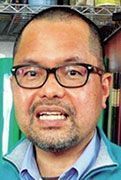
Professor Yasukatsu Matsushima
The remains of the Ryukyuans were brought out by anthropologist Takeo Kanaseki, who was an associate professor at Kyoto Imperial University from 1928 to 1929. In 2004, as a part of the wooden coffin restoration project of Mumujana grave, the Nakijin Village Board of Education confirmed that 26 bodies were kept at Kyoto University. According to the report of the Board of Education, 33 bodies are also stored in the National Taiwan University.
(English translation by T&CT and Megumi Chibana)
Go to Japanese
June 6, 2017 by Ryukyu Shimpo
“The memorial service for Okinawan prisoners of war in Hawaii,” which honors the 12 Okinawans who were captured during the Battle of Okinawa, then taken to a prison camp in Hawaii where they died, was just held for the first time in Honolulu.
The twelve Okinawans survived the fierce battle, but passed away from illness or their injuries after being relocated. The location of their remains is unknown. Hikonobu Toguchi, co-representative of the memorial executive committee raised the importance of recovering these remains without delay during his memorial remarks.
However, there are limits on the ability of private citizens to search for these remains. In April, 2016, the Act to Promote the Collection of War Dead Remains was passed. The act specified that it was “the duty of Japan” to actively progress the collection of remains by 2024. The collection of information and the repatriation of remains is the responsibility of the party indicated by the government. The Ministry of Health, Labor, and Welfare have the responsibility to include the remains of these 12 soldiers. It will also take the efforts of Okinawa itself.
Over 3,000 Okinawans were captured during the Battle of Okinawa and taken to Hawaii. From 1945-46 the Japanese POWs were kept at either Sand Island Detention Camp, or Honouliuli Internment Camp on Oahu. Under order of the U.S. military they were forced to clean military facilities and parks, and labor at construction sites. Some prisoners were kept for as long as a year and a half.
The detention camp that held the Okinawan POWs was located close to the homes of many Hawaiians of Okinawan descent. These Okinawan-Hawaiians cared for the prisoners both from within and outside the facility, offering both psychological and material support.
According to testimonies, the worried Okinawan-Hawaiians would visit, and offer food and cigarettes to the prisoners. They would play music for them, and there is even a report of someone bringing a sanshin, a traditional Okinawan instrument. They also dug underneath the fence for children to sneak the rice balls to prisoners.
There is even one case where the Okinawan-Hawaiians negotiated with the American soldiers walking the track around the prison, allowing them to give 10 prisoners a home-cooked pork dinner.
The Okinawan-Hawaiian population is known for coming to the aid of Okinawa after hearing the horrifying tales of the scorched earth after the Battle of Okinawa. They sent food, clothes, medicine, and even some pigs and goats. The 550 pigs that were sent over at that time had in four years grew to over 100,000. It was the foundation of post-war livestock in Okinawa.
However, the support these same people gave to the POW who has been taken to enemy territory and who lived in fear is not known to the extent of the aid sent to Okinawa.
While there is an individual account of the Hawaiian prisoners, there is no record from the Battle of Okinawa itself. Testimonials and pictures are few, while mysteries such as why they were relocated are many.
There needs to be an official commemoration the hardships of the POWs taken to Hawaii and of the interactions with the Okinawan-Hawaiians who helped them. To that aim, the discovery of primary source materials and the recording of testimonials from those who experienced it and have now grown old needs to be done urgently.
The first memorial was just held, but it cannot be the last. Hereafter, Okinawa needs to get involved and look into holding a memorial of their own as well.
(English translation by T&CT and Sam Grieb)
Go to Japanese
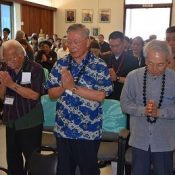
June 5, 2017 Ryukyu Shimpo
Chie Tome reports from Hawaii
On June 4 local time, at Jikoen Hongwanji in Honolulu, a memorial service was held to mourn 12 Okinawan POWs who died in Hawaii. The 12 were among many Okinawans who were held as prisoners of war in the Battle of Okinawa and transferred to Hawaii by the United States military.
It is the first time a memorial service for Okinawan POWs has been held in Hawaii.
More than 200 people, including two ex-POWs, bereaved families of the 12, who died in Hawaii, and other POWs, who returned to Okinawa, and Okinawan Hawaiians took part in the memorial service and prayed for the repose of the souls of the 12 POWs.
Prior to the memorial service, participants visited associated places, including the POW campsites in Schofield Barracks and Sand Island, where the POWs were buried.
The memorial service was organized by the Executive Committee (Hikonobu Toguchi and Choko Takayama, co-representives). Vice Governor Isho Urasaki took part in the memorial service.
Co-representative of the executive committee and ex-POW Toguch,90, said in his memorial speech, “When I think that the souls of the 12 are still wandering the land of Hawaii, my heart is heavy.” He called for early collection of remains still not identified.
Chochi Terukina, 85, a national living treasure of Japan for Ryukyu classical music sanshin, performed the memorial song “Janna Bushi” for the deceased. The sanshin Tekiruna used in the performance was one of the musical instruments given by Okinawan-Hawaiians as a gift to the prisoners of war in camps. The instruments were brought back to Okinawa 70 years ago and were treasured.
The participants, who visited various camps, reflected on the experiences of the POWs, who had been forced to work by the U.S. military and died in a foreign country while feeling growing nostalgia for home. They prayed for the deceased, and wished for peace.
(English translation by T&CT)
Go to Japanese
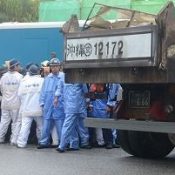
June 2, 2017 Ryukyu Shimpo
On the morning of June 2, riot police removed protestors from Camp Schwab’s gate to allow the entrance of construction vehicles for the Futenma Air Station replacement facility in Henoko, Nago. As riot police removed protestors, one man and one woman were injured and taken away in ambulances.
Riot police wedged the man in between riot police vehicles and officers, ignoring his complaints of not feeling well. His pulse was weak when they released him. Around 10:00 a.m., an ambulance picked him up.
According to eyewitnesses, riot police pulled the woman away and similarly penned her against their vehicles. After that, she bumped into another protester who another riot police officer had dragged over to pen in, too, and fell over. She hit the back of her head on the ground so it gashed open and bled. At 10:30 a.m. an ambulance arrived for her.
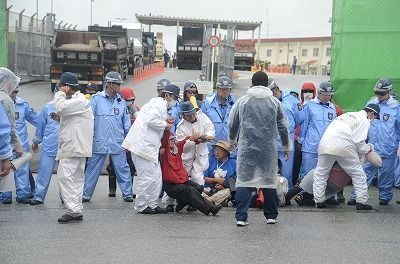
Riot policemen removing local protestors from Camp Schwab’s gate at 9:39 a.m. in Henoko, Nago.
About 50 local people gathered in front of Camp Schwab’s gate in the rain, raising their voices in protest. Despite their efforts, 61 construction vehicles such as dump trucks hauling gravel and semi trucks loaded with ironmongery for scaffolding entered the gate.
The first wave of riot police began removing protestors after 9:00 a.m., and at 9:15 a.m., 14 construction vehicles had entered the base. Afterward more vehicles entered in succession.
(English translation by T&CT and Erin Jones)
Go to Japanese














 Webcam(Kokusai Street)
Webcam(Kokusai Street)


